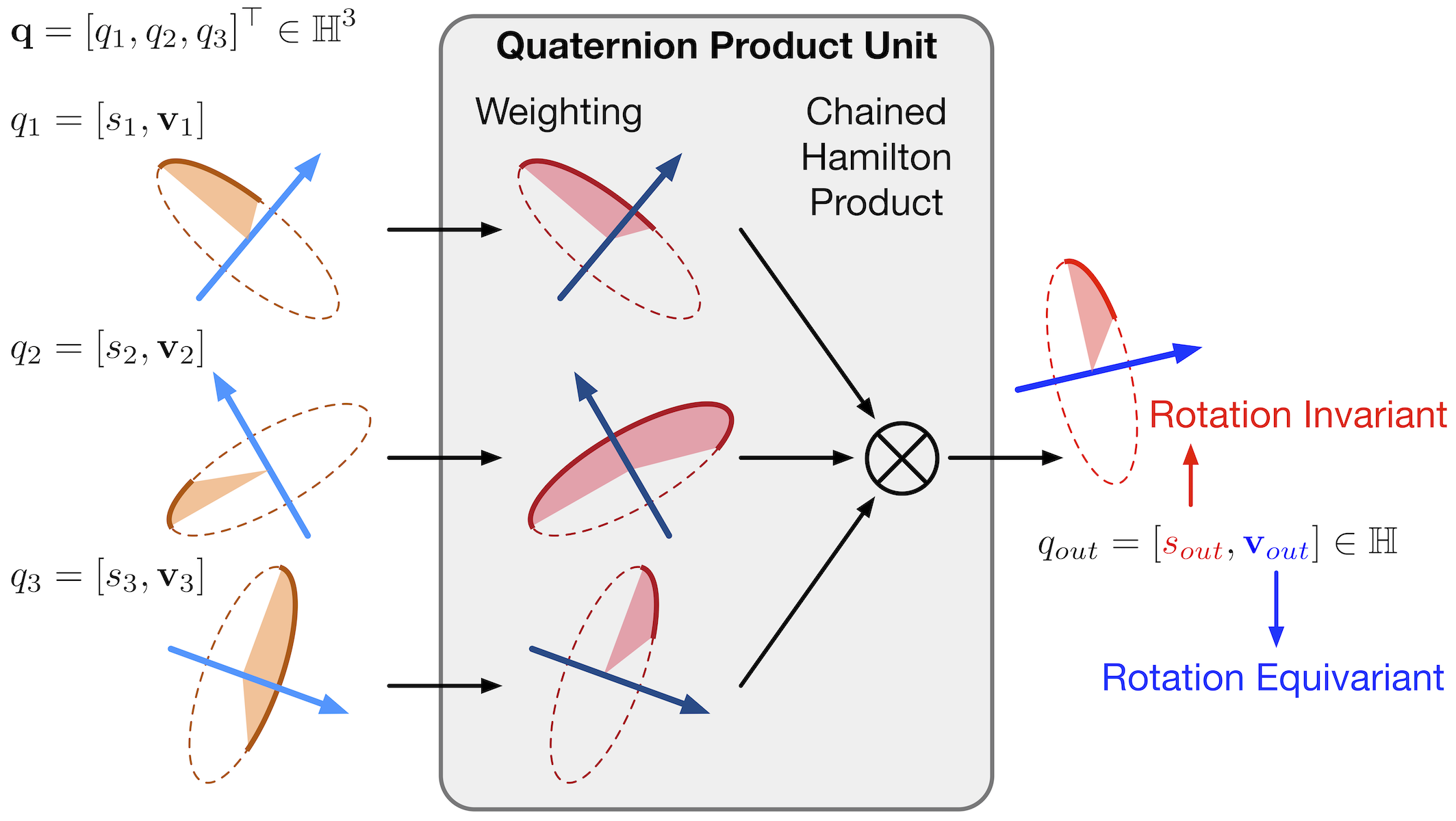This is the code for the experiments of our TPAMI paper. You can find the published paper here: https://ieeexplore.ieee.org/abstract/document/9869301/.
@article{qin2022fast,
title={Fast Quaternion Product Units for Learning Disentangled Representations in $$\backslash$mathbb $\{$SO$\}$(3) $},
author={Qin, Shaofei and Zhang, Xuan and Xu, Hongteng and Xu, Yi},
journal={IEEE Transactions on Pattern Analysis and Machine Intelligence},
year={2022},
publisher={IEEE}
}We use python3 with PyTorch >= 1.0. We also tqdm, tensorboardX, pyyaml for logging. If you use Anaconda, you can setup with:
conda install pytorch==1.7.1 torchvision==0.8.2 cudatoolkit=10.1 cudnn=7.6.5 -c pytorch
pip install tensorboardX pyyaml tqdmWe also use Jupyter Notebook and matplotlib for the synthetic data experiments.
The code for the point cloud experiments in pointcloud is modified based on Pointnet2_PyTorch. Please refer to the origin repository or pointcloud/README.rst for installation instructions.
Run commands python setup.py build_ext --inplace to setup.
Synthetic data experiments are in CubeEdge/experiments.ipynb.
We use the FPHA dataset and the NTU RGB+D dataset. Please refer to their respective project pages for permission and downloading. Data can also be visualized with scripts in data/scripts. Use the following commands to convert to our data formats.
Generate the NTU dataset:
python data/scripts/ntu_gendata.py <dir of raw data> --mode xyz --bench <xview or xsub>
python data/scripts/ntu_gendata.py <dir of raw data> --mode qrel --bench <xview or xsub>
python data/scripts/gen_edge.py <dir of qrel data> --dataset ntuGenerated data is in <dir of raw data>/../NTU-RGB-D/qrel.
Generate the FPHA dataset:
python data/scripts/fpha_gendata.py <dir of raw data> --mode xyz
python data/scripts/fpha_gendata.py <dir of raw data> --mode qrel
python data/scripts/gen_edge.py <dir of qrel data> --dataset fphaGenerated data is in <dir of raw data>/../fpha/qrel.
python train.py configs/<config name>.yamlYou may specify the dataset or other parameters in the config file.
First enter the correct dataset path in config.test.yaml. Then use the following command to test the trained model with (<random rotate>=1) or without (<random rotate>=0) random rotations.
python test.py <dir of model folder> <random rotate the input data ? True:1, Flase:0>Please refer to pointcloud/PointNet++/README.rst and pointcloud/RSCNN/README.md.
Different environment deployments may bring some trouble to your reproduction, and we are also working on this problem. In the next update we will merge these different tasks into the same framework, so stay tuned.
Our DGNN-based models are implemented based on Unofficial-DGNN-PyTorch.
The code for our point cloud experiments is modified based on Pointnet2_PyTorch and Relation-Shape-CNN .
We thank the respective authors for sharing their work.
